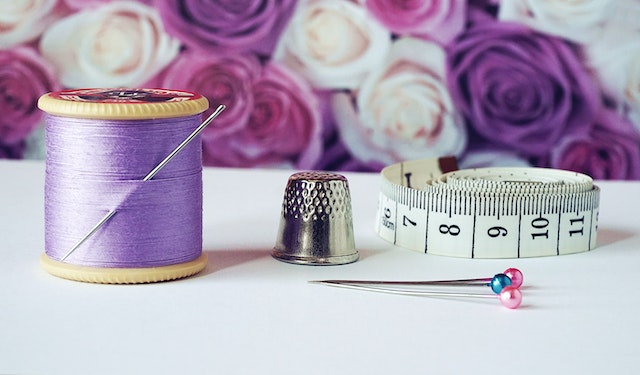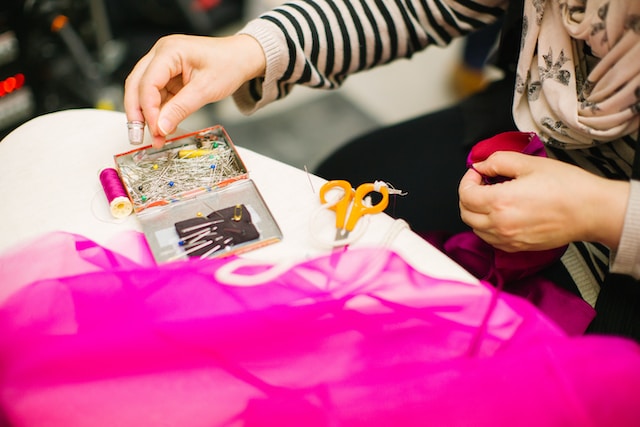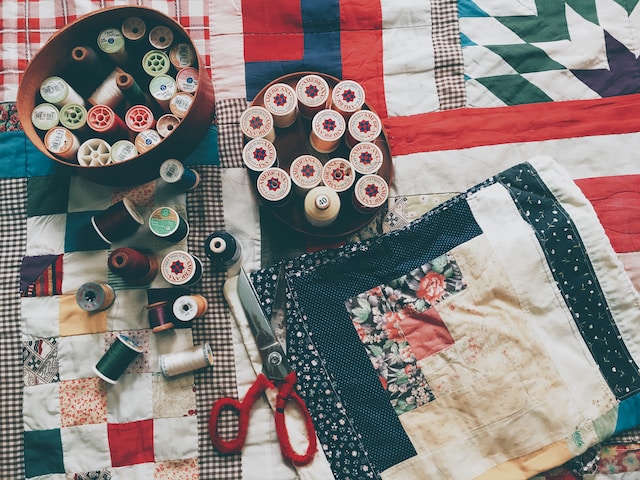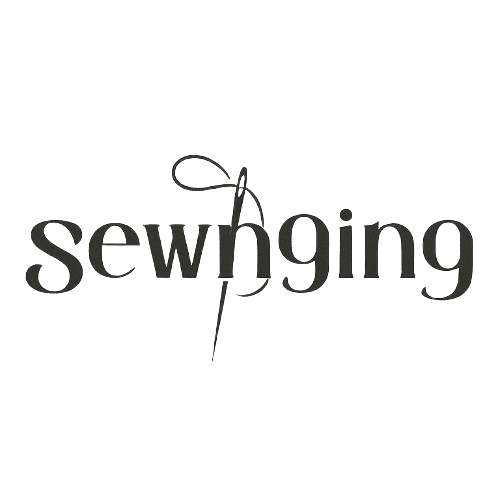Are you tired of struggling with tangled threads while sewing? Do you find yourself wasting precious time searching for a pair of scissors to trim those pesky loose ends? Look no further!
In today’s blog post, we are diving into the best sewing thread clippers– the ultimate tool every seamstress needs in their arsenal. From their compact size to precise snipping capabilities, these little wonders will revolutionize your sewing experience. Say goodbye to frustration and hello to seamless stitching as we explore everything you need to know about sewing thread clippers!
Introduction to Sewing Thread Clippers

Sewing thread clippers are a handy tool to have in your sewing kit. They allow you to quickly and easily remove unwanted threads from your fabric. Thread clippers come in a variety of shapes and sizes, so it is important to choose the right one for your project.
When choosing a thread clipper, you should consider the type of fabric you will be working with. If you are working with delicate fabrics, you will need a smaller clipper that can reach tight spaces. For thicker fabrics, you will need a larger clipper that can handle the extra bulk. You should also consider the type of threads you will be cutting. If you are cutting thick threads, you will need a stronger clipper that can handle the extra weight.
Thread clippers are made from a variety of materials, including plastic, metal, and even wood. The material you choose should be based on your needs and preferences. Plastic thread clippers are often less expensive than metal or wood clippers, but they may not be as durable. Metal thread clippers are more durable than plastic ones, but they can be more difficult to use if you do not have strong hands. Wood thread clippers are the most durable option, but they can be more expensive than other types of clippers.
Once you have chosen the right thread clipper for your project, it is important to learn how to use it properly. Start by cutting off a small length of thread from your spool.
Top 8 Best Sewing Thread Clippers
4.5-inch High-End Thread Nipper
These 4.5-inch High-End Thread Nipper scissors are 100% made in the USA and perfect for sewing, tailoring, or any other delicate fabric work. The blades are 1.25 inches of super-sharpened steel that will make quick work of even the most stubborn fabric. With your ring finger in the loop, simply push the blades together with your thumb and index finger to create a clean cut. The quality craftsmanship assures sharp cutting to the points. These scissors also come with a red rubber safety cap to keep them protected when not in use.
Fiskars Gingher 0487NS Featherweight Thread Snip
The Fiskars Gingher 0487NS Featherweight Thread Snip is the perfect tool for making quick, tiny clips in up-close places. The spring-action cutting reduces fatigue and the protective cap included as points are sharp. The limited lifetime warranty guarantees your satisfaction.
Anchor Seam Ripper & Thread Clipper
The Anchor Seam Ripper and Thread Clipper All in One is a versatile and handy tool for all your sewing needs. It features a seam ripper and thread clipper all in one, making it perfect for quickly removing unwanted stitches or cutting through stubborn threads. The angled design helps to prevent the fabric from being ripped while in use, and the spring-action ergonomic design reduces hand fatigue, making it easy to use for extended periods.
Golden Eagle Double Sharp Quick-Clip Lightweight Thread Clippers
The Golden Eagle Double Sharp Quick-Clip Lightweight Thread Clippers Trimming Scissors & Thread Snips (12pc Combo) is the perfect combo pack for all your sewing, embroidery, and general utility needs. These knife-edge snippers can easily snip through threads, yarns, and multiple layers of fabric with ease. The lightweight design makes them easy to handle and maneuver while the sharp points ensure a precise cut every time.
Clover Kuroha 4 1/4 – Inch Thread Clipper
Clover Kuroha 4 1/4 – Inch Thread Clipper is made of high-quality steel that promises a sharp cutting edge with every clip. These Thread Clippers are just the right size for your sewing kit, and they come in a pack of two so you’ll always have a spare on hand.
Fiskars Thread Snip Scissor
The Fiskars Thread Snip Scissors are perfect for cutting threads, yarns, and other materials. These scissors have a pointed tip that makes it easy to snip threads without damaging the fabric. The soft-grip handle provides comfort and control while you’re cutting. The orange and white design is both stylish and functional.
A LOT OF 12PCS Random Snip Scissor
These scissors are great for a variety of purposes such as sewing, arts and crafts, or office work! They are made with high-quality stainless steel blades that are sharp and durable. The handles are made from industrial-grade PVC plastic and are comfortable to use. The total length of the scissors is 4.3 inches (10.8cm).
Dritz Omnigrid Thread Snips
These Dritz Omnigrid Thread Snips are perfect for those with arthritis or carpal tunnel syndrome. The ergonomically designed soft handle features no rings making these snips easy and comfortable to use. Made in Japan, these snips are high quality and will make your sewing projects a breeze.
Uses of Sewing Thread Clippers
Sewing thread clippers are a versatile tool that can be used for a variety of tasks, from cutting threads to trimming fabric. Here are some of the most common uses for sewing thread clippers:

-Cutting threads: Sewing thread clippers can be used to quickly and easily cut threads, making them ideal for seamstresses and quilters.
-Trimming fabric: In addition to cutting threads, sewing thread clippers can also be used to trim fabric. This makes them ideal for tailors and dressmakers who need to create clean, straight edges on their fabrics.
-Embroidery: Sewing thread clippers can be used to snip away excess threads when embroidering, ensuring that your designs are clean and precise.
-Crafting: Sewing thread clippers can also be used for a variety of crafting projects, such as creating tassels or fringes.
Different Types of Sewing Thread Clippers
There are many different types of sewing thread clippers, each with its advantages and disadvantages. Some of the most popular types include:
Rotary blade clippers:
These clippers have a circular blade that rotates as it cuts, making them very efficient at cutting through multiple layers of fabric at once. However, they can be more difficult to control than other types of clippers and may cause accidental cuts if not used carefully.
Scissors-type clippers:
These clippers look like regular scissors but have a much sharper blade that is specifically designed for cutting thread. They are very easy to control and use, but can only cut through one layer of fabric at a time.
Pinking shears:
These shears have serrated blades that create a zig-zag pattern as they cut, which helps to prevent fraying of the fabric edges. However, they can only be used on lightweight fabrics and are not suitable for cutting through multiple layers of fabric.
Eotary pinking shears:
These shears have a rotating blade that creates a zig-zag pattern as it cuts, similar to pinking shears. However, they can be used on heavier fabrics and can cut through multiple layers of fabric at once.
Applique scissors:
These scissors have sharp points that allow them to easily snip away small pieces of fabric, making them ideal for applique work. However,
How to Use Sewing Thread Clippers?

If you’re like most sewers, you have a box or basket filled with all sorts of sewing notions – including several different types of scissors. But what about those little thread clippers? Do you really need them?
Here’s a quick guide to using sewing thread clippers:
- Start by snipping off any loose threads from your fabric. This will help prevent your scissors from getting dull.
- Next, cut a length of thread that’s about 18 inches long. You’ll need this for the next step.
- Hold the end of the thread in one hand, and use your other hand to clip the thread at an angle about 1/4 inch from the end. This will create a sharp point that’s perfect for piercing fabric.
- Now it’s time to start sewing! Use the sharp point of your thread clipper to pierce through the fabric, then slide the clipper down the length of the thread until it reaches your fingers. This will help keep your stitches even and prevent tangles.
Tips for Using Sewing Thread Clippers
If you’re new to sewing, you may not know what a sewing thread clipper is or how to use one. Sewing thread clippers are small, sharp scissors that are used to cut threads. They’re essential for any sewist, whether you’re a beginner or a pro. Here are some tips for using sewing thread clippers:
- Always use sharp sewing thread clippers. Dull scissors will cause your threads to fray and make it difficult to get a clean cut.
- When cutting threads, be sure to hold the fabric taut so the threads don’t slip and create uneven cuts.
- If you’re working with delicate fabrics, it’s best to use smaller, sharper scissors like sewing thread clippers rather than larger scissors that could damage the fabric.
- Be extra careful when cutting threads near your fingers – those sharp blades can do some serious damage!
- When cutting multiple threads at once, snip each one individually rather than trying to cut them all at once. This will give you cleaner, more even cuts.

Maintenance and Care of Sewing Thread Clippers
If you have a sewing machine, then you know how important it is to have good-quality sewing thread clippers. After all, if your sewing machine is not working properly, then it can ruin your project. That is why it is important to take care of your sewing machine and keep it in good working order. Here are some tips on how to do that:
- Always use high-quality sewing thread clippers. There are a lot of different brands out there, but not all of them are created equal. You want to make sure that you invest in a pair of clippers that are going to last. Look for ones that are made from durable materials and that have sharp blades.
- Keep your sewing thread clippers clean. Again, this is something that will prolong the life of your clippers. Make sure that you wipe them down after each use with a soft cloth. You also want to oil the blades on a regular basis to keep them from rusting.
- Be careful when using your sewing thread clippers. This may seem like common sense, but it is worth mentioning nonetheless. Be careful not to clip too close to the fabric as you could damage it. Also, be mindful of where you are storing your clippers when not in use as they can become dull if left sitting out in the open air for too long.
Conclusion
Sewing thread clippers are a must-have for any sewist and can make the sewing process much simpler. They come in different sizes, shapes, and styles to fit your needs best. With the right type of clipper, you’ll be able to easily cut threads as close or far from fabric as you need. Whether you’re doing alterations or upcycling clothes, having a good pair of thread clippers is essential for neat and clean finishes on all types of garments.







